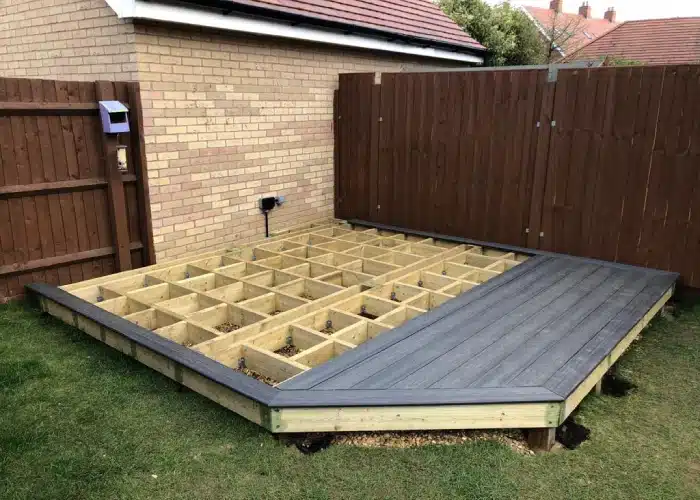Can You Stain Composite Decking
What you need to know about replacing your wooden deck with composite decking
Wooden decking boards, even those constructed from pressure-treated timber are touted for their resistance to insects, water, and rot, but are increasingly susceptible to wear and tear over time, particularly under the constant assault of direct sunlight and frequent rain. Regular inspections are imperative to identify any damage before it escalates.
If you find yourself considering a replacement for your wooden decking boards due to unforeseen maintenance demands or complaints about tripping hazards or splinters, it might be time to explore the benefits of upgrading to composite decking. Not only are composite decking boards environmentally friendly, crafted from recycled materials, but they also boast superior durability, resisting cracking, splintering, and injuries to family and friends.
But can you seamlessly transition from wooden to composite decking boards? Absolutely.
Understanding the Cost of Removing and Replacing Decking Boards
Before diving into dismantling your current decking, it’s wise to consider the associated costs. Here are a few factors to consider:

Assessing Your Deck's Condition
Start by evaluating the condition of your existing decking and subframe. The age and maintenance of the frame play a significant role in determining the extent of removal and replacement required.

Check the Integrity of the Deck Subframe
A simple test involving a screwdriver can reveal the condition of your decking subframe. Firm, sturdy timber indicates a sound frame, while soft, rotting wood signals the need for replacement. It’s advisable to replace affected areas promptly to prevent further deterioration.
Inspecting Additional Elements
Beyond the deck posts, it’s crucial to examine beams, joists, railings, ledges, and all framework components for signs of damage such as darker areas, cracks, crumbles, or warping boards.
Reasons for Replacement
While damage is a primary reason for decking replacement, other factors like planning for a pool or hot tub area or compliance with updated building regulations may also necessitate an upgrade to composite decking.
Replacing Decking Boards
You typically have two options with existing decking: removing only the top decking boards or replacing the entire decking including the subframe. The decision depends on the condition of the substructure and your budget.
Cost Considerations
Material costs, including decking boards and additional materials like fasteners, play a significant role in the overall expense. Composite decking boards, known for their durability and low maintenance, are increasingly popular options, though their quality and design variations can affect pricing.
It is worth noting that not all composite decking boards are made equally. They may appear very similar when brand new, but that’s where the similarity ends. The use of cheaper raw materials coupled with poor manufacturing processes and production techniques employed by inexperienced technicians will lead to a poor-quality product and a shorter service life. It’s best to choose an established supplier with a known brand that offers quality products and good after sales care.
Why Choose Composite Decking
Modern composite decking offers numerous advantages over traditional wooden boards, including improved resistance to moisture, UV light, scratches, and slipping. Composite boards are also denser and safer, providing peace of mind for your family’s safety.
Labour Costs
Labour charges for removing and replacing decking boards can vary depending on the complexity of the job and the expertise of the installers. While hiring professionals ensures efficient and accurate installation, DIY options are available for those with adequate experience and tools.
Additional Expenses
Beyond labour and material costs, factors such as fasteners, subframe replacement, and finishing touches such as railings, fascia boards or angle/corner trims should be considered to accurately estimate project expenses.
By carefully assessing your decking’s condition, exploring material options, and factoring in labour and additional expenses, you can plan and execute a seamless transition from wooden to composite decking boards, enhancing both the aesthetics and functionality of your outdoor space.



